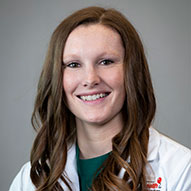Plano
469-303-3000
Fax: 469-303-4520
Frisco
469-303-3000
Fax: 469-303-4520
Prosper
469-303-3000
Fax: 469-303-4520
Request an Appointment with codes: Andrews Institute (Sports Medicine)
Our high trained orthopaedic and sports medicine specialists have treated countless cases of shoulder instability and dislocation.
469-303-3000
Fax: 469-303-4520
469-303-3000
Fax: 469-303-4520
469-303-3000
Fax: 469-303-4520
Request an Appointment with codes: Andrews Institute (Sports Medicine)
Shoulder instability occurs when the joint is loose, allowing the upper arm bone to move around too much in the socket. When an unstable shoulder fully slips out of its socket, it’s called a dislocation.
We advise parents to treat shoulder dislocation as soon as possible, and provide a comprehensive range of options. Early intervention helps avoid further shoulder damage and ensures a faster return to daily activities like sports.
Common symptoms of shoulder instability include:
When shoulder instability becomes chronic, shoulder dislocations happen more often. Signs and symptoms of shoulder dislocation include:
Sometimes, dislocated shoulders may temporarily move back in place. If this happens, your child may still have shoulder damage that needs medical attention. If you suspect a shoulder dislocation, consult your child’s physician right away.
Diagnosing shoulder instability or dislocation starts with a full assessment and evaluation, so that our physicians can develop a care plan for your child’s symptoms. Tests may include:
Common causes for shoulder instability and dislocation include:
Treatment for shoulder instability and dislocation depends on the severity of your child’s injury. Most often, our physicians can use therapies that avoid surgery. When a child is treated early, our physicians and therapists can often prevent more serious problems such as dislocations.
Nonsurgical treatments include:
For chronic shoulder dislocation, we may recommend surgery to repair damaged muscles, tendons or ligaments.












Most often, shoulder instability and dislocation in children can be treated without surgery. For dislocations, your physician will reset the shoulder joint and recommend rehab to strengthen the shoulder structure. If repeated dislocations occur and instability continues, we may recommend surgery.
Learn more about shoulder instability and dislocation in children: